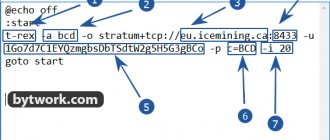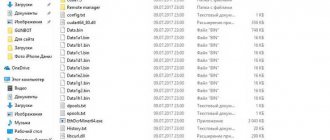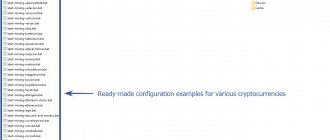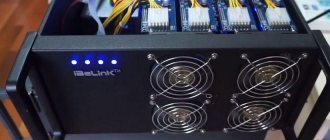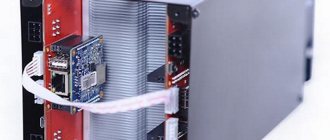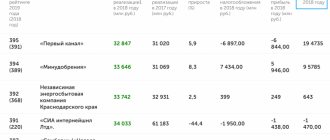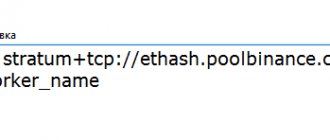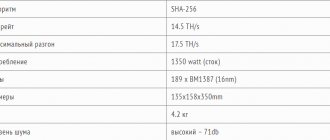The Chinese manufacturer of mining devices Ebang continues to develop effective ASIC miners and is not going to stop there. In August 2022, Ebang introduced the flagship device Ebit E12 + with a hashrate of 50 Th/s for the most productive Bitcoin mining.
What kind of beast is Ebit E12+? How much more productive is this miner than Ebit E11++? Is it worth buying it or is it better to take a closer look at the products of Bitmain and Innosilicon? You will find answers to these questions in our review!
Specifications
Let's start by looking at the technical characteristics of the model, with a competing product, Antminer S9, as a guide. In addition, the manufacturer of the Ebit E9, Ebang, has created a more advanced modification called E9+, and its parameters will also be discussed. Let's move on to the characteristics themselves:
- algorithm – SHA-256;
- hashrate – 6.3 terahash per second;
- energy consumption – 880 W, permissible deviation 5% in both directions;
- consumption and power ratio – 140 watts per terahash with a power supply efficiency of 93% and an air temperature of 25℃;
- voltage – 11.8-13 V;
- weight – 4.2 kg;
- 96 DW 1227 96 pcs chips with a frequency of 730 MHz, 14 nm process technology;
- Ethernet network interface 1 Gbit/s;
- operating temperature – from -10 to 40 °C;
- operating humidity – 5% RH – 95% RH, non-condensing;
- dimensions – 290 x 126 x 155 millimeters;
- noise level – 80 dB;
- cooling – 2 fans.
Power supply parameters:
- energy efficiency – 93%;
- power – 1,500 W.
As for the improved E9+ model, the most significant change in it was the increase in the number of chips from 96 to 132 pieces, as a result of which the performance also increased, amounting to 9 terahashes per second, that is, an increase of 42.8%
Briefly about Ebang Ebit E12+
The Ebang company has not released ASIC miners for about ten months and there are many reasons for this: the protracted correction of all cryptocurrencies, the long payback period for mining devices and uncertainty about the future of cryptocurrencies. However, in the first half of 2022, the market showed an upward movement, and cryptocurrency mining became profitable again. Against this backdrop, Ebang has decided to release the Ebit E12+ with the following specifications:
- Hash algorithm – SHA-256;
- Productivity – 50 Th/s;
- Energy consumption – 2250 W;
- Dimensions – 205mm * 195mm * 303mm
- Noise level – 70 dB;
- Weight – 10 kg;
- Price – $2250 (Miner Bros store);
Ebang decided to save a little money and installed inside the Ebit E12 + DW1233 integrated circuits, made using a 10-nanometer process technology. By comparison, the Bitmain Antminer S17 Pro features new 7nm chips from tech giant Taiwan Semiconductor Manufacturing. However, the developers have significantly improved the heat removal system; now it consists of high-power fans and aluminum radiators with the highest heat transfer rates.
The Ebit E12+ aluminum case reliably protects the board from mechanical damage. Of course, you can “undress” the device, but it is unlikely that its open elements will be as well protected from external physical influences.
Features of the Ebit E9 miner
It is clear that with such indicators, both the E9 and even the E9+ are many times inferior to more modern models, such as the Asinity AX-888 B2 (16 TX per second), and the further development of the Ebit E10 line (18 TX per second) - but still with These ASICs of the E9 model are in different price categories, and they are not easy to get.
What’s worse is that this miner also loses to its direct competitor – Antminer S9. located in the same price category, has a power of 14 TX per second. Even though the energy consumption is also almost twice as high, it is still more profitable. As a result, after considering the characteristics, we come to the conclusion that if you are going to purchase a new miner, then it is advisable to consider either purchasing a latest generation device, or, if the budget is limited, the Antminer S9. Purchasing an E9 or its improved version would be a logical step if it is possible to get it significantly cheaper. The Ebang company itself, to compete with Antminer S9, recently introduced a new model E9++ with a performance of 14 TX.
Miner Ebit Miner E9 Plus 9TH/s+PSU (SHA-256)
Mining target currency: Bitcoin
.
E9 Plus is an updated version of the E9 miner from the famous Chinese manufacturer Ebang. The predecessor performed very well, earned a lot of positive reviews, and in the new E9 Plus, the developers embodied everything good from the E9, significantly adding performance.
Based on a combination of factors such as performance, power consumption and price, the E9 Plus easily outperforms its closest competitor, the S9 from BITMAIN.
Appearance and interfaces
Ebit E9 looks like the twin brother of other ASICs from competing companies - the external differences are minimal, and it uses the same elongated design, in which fans on both sides blow air as if through a pipe. This case provides a good level of cooling, allowing you to overclock the miner if necessary.
At the top of the case there is a control board with control buttons and status indicators, and there is a protective grille on the front panel. There are no other features in the appearance of the device.
How to launch Ebit E9?
First you need to connect the ASIC to a power source, then connect it to the Internet. Next, select a mining pool and find the IP address of the device in its network that appears there. In the application settings, add the “Pool” and “Worker” commands. If everything is done correctly, the corresponding lights on the device will turn on, indicating that it is in operating mode.
Connection and setup
The kit includes a powerful power supply with a good performance ratio (93%), and first you need to connect power to each board - the regular E9 has two boards, the E9+ has three.
Then the network cable is connected. After this, you will need to determine the IP address of the ASIC. Set up a pool and create a worker. After all these settings are made, the miner goes into operating mode, as indicated by the indicator on the front panel.
At a standard frequency of 730 MHz, the performance will be 6.3 TX per second, and the board temperature will be about 47 ℃.
You should check that the ASIC is normal by testing it for 24 hours and determining whether the temperature indicators correspond to the optimal ones: case - 32 ℃, computing board heatsink 47 ℃, air intake - 23 ℃.
If everything is normal, you can try to overclock the device, but carefully, without sharply increasing the frequency. By increasing it by no more than 5 MHz, it is permissible to increase it to 800 MHz, raising performance to approximately 7 TX per second - this is still a good increase. However, keep in mind that such overclocking leads to the loss of the warranty, and therefore sometimes it makes sense to wait until the warranty expires first.
Speaking of the period: people often make the mistake of thinking that the guarantee begins to apply from the time the ASIC is received. This is not so, and the entire period while it was on its way to you is also included in the warranty. For example, if the warranty is 180 days (in the case of Ebit E9 it lasts exactly that long), and the miner was sent to you in early January, and arrived 60 days later, in early March, you only have 120 days of warranty left.
Another important nuance is the noise level. The fans operate at 6,000 rpm, creating a noise of 80 dB, which is quite significant, and interferes with installing the ASIC in the living room, and when installed on the balcony, it can also disturb the neighbors. It is impossible to reduce the speed at the software level, and besides, these coolers are not efficient enough. The same applies to the power supply cooler with a 40 mm turbine, which creates serious noise.
Replacing coolers will help reduce the noise level; it will not cost much, so if it is not possible to install the ASIC in isolation, then it is highly recommended to do so. This way you can reduce the noise level to 68-70 dB.
However, we note that this will also lead to loss of the right to warranty service - as will the replacement of any part of the device.
User ratings
After its release, Ebit E9 caused a mixed reaction among users. When comparing it with S9, the Ebit E9 miner was inferior both in terms of computing power and energy consumption, recalculated for 1 terahash. So for the S9 this value was 93.2 W/terahash, and for the E9+ it was already about 145 W/terahash, which implied an increase in costs during operation. However, Ebit E9+ turned out to be much easier to buy, and, in addition, it was much cheaper. For example, at the beginning of 2018, a miner could be purchased from an official representative of Ebang for 195 thousand rubles. As a result, the payback schedule for the totality of all parameters for the E9+ looked more attractive.
But a number of users were confused not only by the performance, but also by some technical imperfections. Not all devices in the same batch worked equally reliably. Sometimes problems arose due to the fault of the users themselves, who, out of habit, overclocked the device manually or slowed down the fan. Basically, the safety margin of the equipment allowed such variations, but often the E9+ overheated and malfunctioned. Based on the set of experiments, the following dynamics of temperature changes can be tracked:
- At a frequency of 735 MHz - the recommended average production rate is 9 Th/s - temperature 47℃.
- Frequency 770 MHz – temperature about 51-60℃ – 9.4 Th/s
- Frequency 780 MHz (subject to maintaining stable operation) – temperature 65℃ – 9.5 Th/s.
There were also frequent problems with the operation of coolers and volume (the sound was initially stated at 70 dB). The grille covering the air intake, located on the front side of the device, was intended, according to the developers, also to reduce noise levels. In practice, judging by numerous reviews, the Ebit E9 9TX produced an uneven, “floating” and “wavy” sound. Some users dealt with this problem through various “manual” modifications, which were associated either with a radical replacement of the power supply, or with some changes in the cooler design. For example, the cooler was moved back 20-25 mm at the outlet (screwed with longer screws) to get rid of the resulting back pressure. Also, in the first batches, Ebit had problems implementing cooler controllability in the miner firmware. Subsequent firmware updates gradually began to correct the initial glitches.
At the end of 2022, the company introduced another ASIC model with a hashrate of about 19.8 TH/S - EBIT E10, which as of March-April 2018 began to be considered optimal in terms of payback (including due to the presence of more modern 10 nm chips). However, the price of the new miner was one and a half times higher than that of the E9 Plus 9TH/S, which allows us not to write off the E9+ just yet.
Advantages and disadvantages
Like other ASICs, the E9 has both its pros and cons. We have already talked about most of them, but now we will highlight the main ones briefly for greater clarity. Pros:
- Quite high build quality (by Chinese standards). The percentage of major breakdowns is low. Even if some problems occur, it is usually possible to avoid repairs under warranty, which would waste a lot of time.
- Easy setup and launch.
- Modest prices.
Minuses:
- High noise level and inability to regulate fan speed.
- Sometimes software problems occur. As a result, the ASIC does not provide full performance. Usually they can be solved by flashing the device, but this is still additional work.
- Users complain about sometimes arising problems with thermal paste - the manufacturer used a cheap one, and also too little. To solve these problems, you have to disassemble the device and apply new thermal paste yourself. Even if there are no problems, it is highly advisable to do this before overclocking, since this will reduce the temperature of the ASIC.
- Low performance by today's standards - the E9 is clearly outdated.
Device design and construction
Ebit E9 has a design and shape that is already familiar to the eye of a user experienced in mining. The assembly of the machine itself is of quite high quality. The device is equipped with a control board.
On its front part there is a special grille, which makes it possible to significantly reduce the noise level. The back side of the Ebit E9 is topped with a powerful 12-centimeter cooler, the maximum speed of which is more than 3 thousand revolutions per minute. The side side is decorated with a branded sticker containing data on the technical parameters of the device and the manufacturer’s contacts.
The device contents include 2 system microcircuits with 14-nm chips. Each of them is equipped with two 6-pin connectors. In addition, the central board contains a network cable connector. It is worth mentioning that the ASIC comes with a 1.5 thousand watt power supply.
Test results
A series of Ebit E9 tests were carried out, which showed:
- When the frequency reaches 735 megahertz, the cryptocurrency mining speed exceeds 6 THs/s. The temperature was approximately 47 degrees Celsius, and the power consumption was just over a thousand watts.
- The device was then tested for a whole day. The average power exceeded 6.5 THs/s, no significant drops in speed were recorded. The noise level varied from 65 to 70 decibels. The case heated up to 30 degrees, the motherboards heated up to 45. The temperature of the cooling grid was 23 degrees.
Overall, Ebit E9 performed above average.
